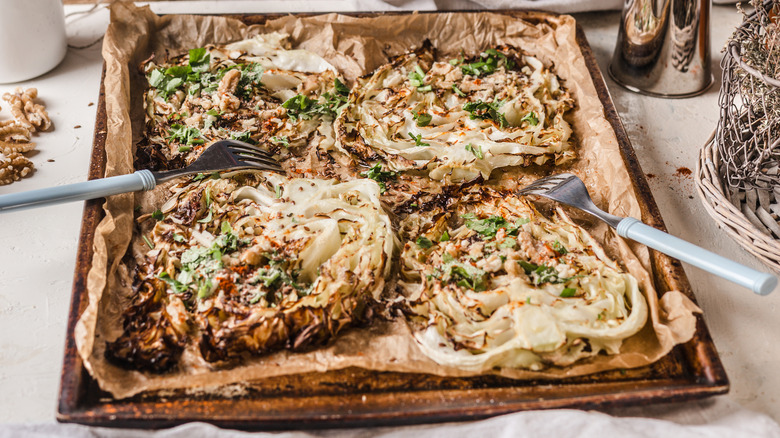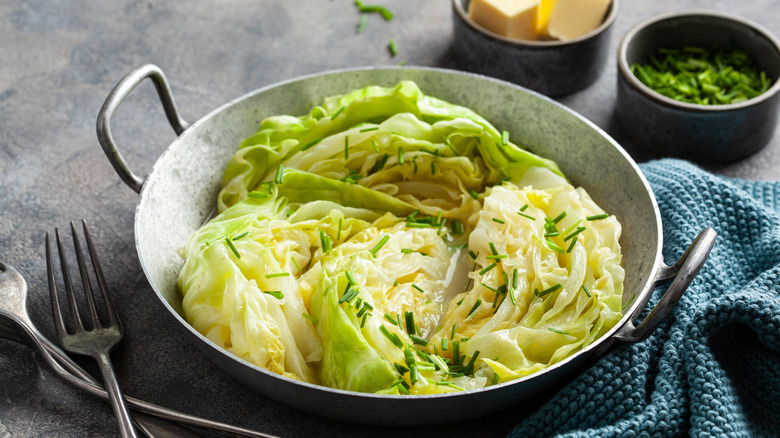Why You Should Always Avoid Roasting Napa Cabbage
Like lima beans and beets, leafy green cabbages might strike a note of fear, or at least skepticism, into our perpetually adolescent hearts. But much like Brussels sprouts and cauliflower, which have both recently experienced a culinary reckoning, cabbages are one of many cruciferous vegetables that totally transform when roasted. Their dense, hard-to-chew-through woody texture softens under high temperatures, while their leafy edges get darkly crisp. Plus, high heat brings out the hint of sweetness hiding among cabbage's leaves to help develop a caramelized, meaty, and many-layered taste.
However, while we'd wholeheartedly recommend roasting your cabbage rather than braising, boiling, or consuming it raw (at least for the uninitiated), some types of cabbage can take the heat while other cabbage varieties will fall apart. If you'd like to eat a roasted cabbage in the same fork-and-knife manner you'd use to eat a steak or a steakhouse wedge salad, avoid putting the loosely leafed napa cabbage in the oven at all costs. Its flimsy, delicate leaves and tender structure will turn to mush when roasted and met with a fork, so stick to heartier varieties with more densely packed leaves, like green cabbage or white cabbage.
How to cook napa cabbage without roasting it
Despite its penchant for falling apart in the oven, napa cabbage is actually a fairly friendly cabbage to cook with. It has a mild, slightly sweet taste with long white ribs for toothsome texture and loose, light green leaves for easy, crispy crunching. If you're a cabbage connoisseur who's happy to eat it raw, napa cabbage can work well thinly shredded for coleslaw, finely chopped for a fresh salad, or slivered into strips for a cold noodle dish. Napa cabbage also does well when pickled, which is why it's a staple ingredient of many classic kimchi recipes.
If you're ready to turn your stovetop on, napa cabbage is a perfect accompaniment for many soups and stews that need a little added heft. Cabbage is often an ingredient found inside a dumpling, so why not try a hearty wonton and cabbage soup with a hit of spice from chili crisp for a cold night in?
Although napa cabbage can start to collapse in the oven, quickly sautéing it in a pan is a great way to lightly break down its rough texture, while also adding just a touch of color and caramelization. Sauté your cabbage in olive oil and season with salt, pepper, and red pepper flakes before incorporating the healthy veg into your next pasta dish. Sautéed cabbage is also an easy, hearty addition to a plate of pan-fried potstickers or pan-seared tofu.

